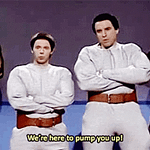Let’s kick things off by getting to know Waterfall a little better. If project management methodologies were characters in a story, Waterfall would be the meticulous planner with a checklist for every occasion. It’s structured, sequential, and thrives on precision. So, what exactly is Waterfall, and why has it been such a staple in project management?
Waterfall is a linear and sequential methodology—meaning each phase of the project flows into the next, like, well, a waterfall. You don’t jump back upstream once you’ve passed a step. Instead, you move methodically through distinct phases:
Requirements: Define exactly what the project will deliver.
Design: Create detailed blueprints or plans for execution.
Implementation: Build or execute the design.
Testing: Ensure the result meets the requirements.
Deployment: Deliver the finished product to stakeholders.
It’s a system built on the idea of moving forward in a straight line, completing each phase fully before progressing to the next. That makes it predictable, logical, and, let’s be honest, a little rigid.
Waterfall was born in industries where precision isn’t just nice to have—it’s absolutely essential. Think construction, engineering, and manufacturing. In these fields, mistakes can be costly, dangerous, or downright catastrophic. You don’t want to start pouring concrete for a skyscraper only to realize halfway through that the foundation’s in the wrong place.
The Waterfall model formalized these principles in the 1970s, and its step-by-step approach quickly became the gold standard for large, complex projects. It worked beautifully in environments where change wasn’t expected—or welcomed.
Let’s break down what makes Waterfall unique:
Fixed Scope and Timeline: Once you define the scope of the project, it doesn’t change. The plan is set in stone, and the timeline is locked in.
Heavy Planning: Waterfall thrives on preparation. You spend significant time in the requirements phase, ensuring every detail is accounted for before moving forward.
Thorough Documentation: Each phase generates comprehensive records, from initial plans to final test results. This documentation ensures accountability and provides a clear trail of decisions.
Sequential Phases: You complete one phase entirely before starting the next. There’s no overlap, and you don’t circle back to previous steps. Waterfall is like a good set of instructions—it’s clear, predictable, and leaves little room for surprises. It’s perfect for projects where you know exactly what you need to deliver and when. Imagine planning a wedding with Waterfall:
You start by defining the requirements—guest list, budget, and venue.
Then you move to the design phase—choosing decorations, menu options, and seating arrangements.
Implementation involves booking vendors and sending invitations, followed by testing—like doing a final walkthrough of the venue.
Finally, deployment is the big day itself, and with Waterfall, you’ve planned every detail to perfection.
Waterfall often gets a bad rap for being rigid or old-fashioned, but when the conditions are right, it’s the MVP of project management methodologies. Here’s why Waterfall continues to shine as a reliable, structured approach to getting things done.
One of Waterfall’s greatest strengths is its predictability. When you’re working on a project with clearly defined goals and requirements, Waterfall’s step-by-step structure ensures that everyone knows exactly what’s happening, when it’s happening, and who’s responsible for it.
Let’s say you’re designing a custom home for a client. Waterfall allows you to create a detailed plan upfront, from the architectural blueprints to the interior design choices. Once the foundation is poured, there’s no need to question whether the plumbing layout is right—it’s all been accounted for in the initial requirements phase.
This predictability reduces surprises and builds confidence among stakeholders because everyone is aligned with the timeline and deliverables from the get-go.
In Waterfall, roles and responsibilities are clearly defined at every phase. The requirements team gathers the information, the design team creates the blueprints, the implementation team builds the product, and the testing team ensures it meets expectations. There’s no ambiguity about who’s doing what.
This clarity minimizes miscommunication and prevents tasks from falling through the cracks.
For example, Imagine a marketing team rolling out a new product campaign. With Waterfall, the designers know they’re responsible for creating assets during the design phase, while the analytics team handles performance tracking during the testing phase. Each team member stays in their lane, ensuring the project moves forward efficiently.
Waterfall thrives in environments where the requirements are well-defined and unlikely to change. If you know exactly what you’re building, why it’s needed, and how it should function, Waterfall provides the structure to execute that vision without detours.
Think about building a bridge. The engineering requirements, materials, and safety regulations are established before construction begins. There’s no room for improvisation once the process starts, making Waterfall the perfect fit for this type of project.
Waterfall’s focus on upfront planning ensures that everything is accounted for before work begins, reducing the risk of costly changes later.
If you love documentation—and let’s face it, sometimes you really need it—Waterfall is the methodology for you. Every phase produces detailed records that not only guide the project but also serve as a valuable reference later.
Comprehensive documentation is essential for industries like healthcare, aerospace, and government contracting, where decisions need to be traced and justified.
Take the pharmaceutical industry for example, developing a new drug involves regulatory approval at every step. Waterfall ensures that each phase is meticulously documented, from initial trials to manufacturing protocols, leaving a clear paper trail for audits.
This level of documentation creates accountability and ensures compliance with strict industry standards.
Waterfall’s phase-based structure makes it easy to track progress. Each phase acts as a milestone, providing a clear indication of how far along the project is and what remains to be done.
Picture a corporate office relocation. Once the new office design is complete, the team moves to implementation—installing furniture, setting up workstations, and configuring IT systems. With Waterfall, you know exactly when one phase is complete and when the next begins, leaving no room for guesswork.
This transparency keeps stakeholders informed and confident, which is particularly valuable in high-stakes projects.
Alright, we’ve talked about what makes Waterfall great, but let’s not pretend it’s perfect. Like any methodology, Waterfall has its challenges, and understanding these weaknesses can help you decide if it’s the right fit for your project.
Waterfall’s rigid, linear approach can be a double-edged sword. While it’s great for projects with fixed requirements, it’s far less forgiving if things change mid-project.
Once you’ve completed a phase, going back to make changes is costly and time-consuming. Imagine you’re halfway through building a house and decide you want to add an extra room. That’s not just a minor adjustment—it’s a major disruption.
If your project involves uncertain or evolving requirements, Waterfall’s inflexibility can create more headaches than it solves.
One of Waterfall’s biggest weaknesses is that feedback often comes near the end of the project, during the testing or deployment phases. By the time issues are identified, it’s much harder—and more expensive—to address them.
You don’t get to see a working product until the implementation or testing phase. If there’s a mismatch between the client’s expectations and the final product, you might have to start over.
Imagine you’re working on a marketing campaign for a product launch. You design and execute the entire campaign, only to realize during testing that the target audience doesn’t connect with the messaging. At this stage, it’s far more difficult to go back and adjust the creative approach.
Without continuous feedback, there’s a higher risk of delivering something that doesn’t fully meet the client’s needs or expectations.
Waterfall thrives in stable environments, but it struggles in industries where change is constant. Fast-paced projects often require the flexibility to pivot quickly, and Waterfall’s rigid structure isn’t built for that. In a tech startup, a team might need to adjust their product based on early user feedback. With Waterfall, they’d have to wait until the testing phase to implement changes, potentially losing valuable time in a competitive market.
Waterfall’s phase-based structure often divides teams into silos, with each group working on their piece of the project in isolation. While this can create focus, it can also lead to misalignment and missed opportunities for collaboration.
For example, a design team working on a product might hand off their plans to the development team, only for developers to discover that some design elements aren’t technically feasible. In an Agile approach, this issue would likely have been caught earlier through collaboration. Collaboration across phases can lead to better ideas, faster problem-solving, and fewer surprises down the line. Waterfall’s siloed structure makes this harder to achieve.
Waterfall places a heavy emphasis on upfront planning, which is a strength in some cases—but it can also backfire. Spending too much time on detailed planning can lead to delays, especially if those plans end up changing anyway.
Picture a team planning a website redesign. They spend weeks finalizing every tiny detail of the layout and color scheme, only to discover during implementation that the technology they’re using requires adjustments. All that time spent on detailed planning now feels wasted. Projects with unknowns or evolving requirements are better served by iterative approaches, where planning and execution happen in tandem.
It’s not the most flexible methodology, it struggles in fast-changing environments, but the biggest challenge is timing: Waterfall works best when the project’s requirements are crystal clear from the start. If there’s even a chance of changes or surprises, you’ll need to weigh the risks carefully.
Waterfall’s strengths are all about providing clarity, structure, and reliability. It’s a method that works beautifully when the requirements are clear, the stakes are high, and there’s no room for improvisation.
Now let’s tackle one of the most important questions: when should you use Waterfall?? The key here is understanding the type of project you’re dealing with. Waterfall is not a one-size-fits-all solution, but when the conditions are right, it’s an unbeatable tool for success. Let’s dive into some specific scenarios where Waterfall shines.
Waterfall excels when the project’s goals and requirements are set in stone. If you know exactly what needs to be done, why it’s needed, and how it will be executed, Waterfall’s structured approach ensures a smooth path from start to finish.
Construction projects like bridge-building are classic examples of Waterfall in action. Every aspect—from materials to safety standards—is planned upfront. You can’t “pivot” halfway through and decide to add a toll booth or change the length of the bridge. With Waterfall, every phase is carefully planned and executed, leaving no room for ambiguity or surprises. Waterfall’s upfront planning ensures that all variables are accounted for before the first brick is laid. This reduces risks and ensures that everyone is aligned on the final deliverable.
When failure is not an option, Waterfall’s meticulous structure is a lifesaver. In high-stakes projects, where errors can lead to significant costs, safety issues, or regulatory penalties, Waterfall provides the predictability and oversight needed to minimize risks. Take Developing a Medical Device: In the healthcare industry, creating a medical device involves strict regulations and rigorous testing. Waterfall’s comprehensive documentation and phase-based approach ensure compliance at every step. For instance:
The requirements phase defines the device’s specifications and intended use.
The design phase ensures all components meet regulatory standards.
The testing phase rigorously evaluates the device’s safety and effectiveness before it reaches patients.
Waterfall leaves no room for improvisation. Every step is documented and approved, ensuring compliance and minimizing risks in environments where mistakes can have serious consequences.
Certain industries rely heavily on documentation to track decisions, approvals, and progress. Waterfall’s emphasis on detailed records makes it the go-to methodology for these scenarios.
Let’s pretend that you, the listener, are working on a government project, such as developing a new voting system. Every phase requires documentation for accountability and audits, from initial requirements to final deployment. Waterfall ensures that every decision and adjustment is traceable, which is essential for transparency in public projects.
Comprehensive documentation ensures accountability, provides a paper trail for audits, and protects teams from disputes or miscommunication down the line.
Some teams thrive on clear roles, predictable workflows, and defined timelines. For teams that prefer stability and dislike ambiguity, Waterfall’s structure provides a sense of security.
Waterfall allows the teams focus on their specific responsibilities without worrying about overlapping tasks or last-minute changes. Stakeholders also feel reassured by the predictability of the timeline.
In some projects, sticking to the timeline and budget is non-negotiable. Waterfall’s clear milestones and fixed scope make it the ideal choice for these scenarios.
And that's it for part one. In part two, we're going to do a deep-dive into a hypothetical waterfall project, an office relocation, and I'll explain each phase and how and why Waterfall works best in this scenario. So be sure that you're subscribed so you don't miss it!












Share this post